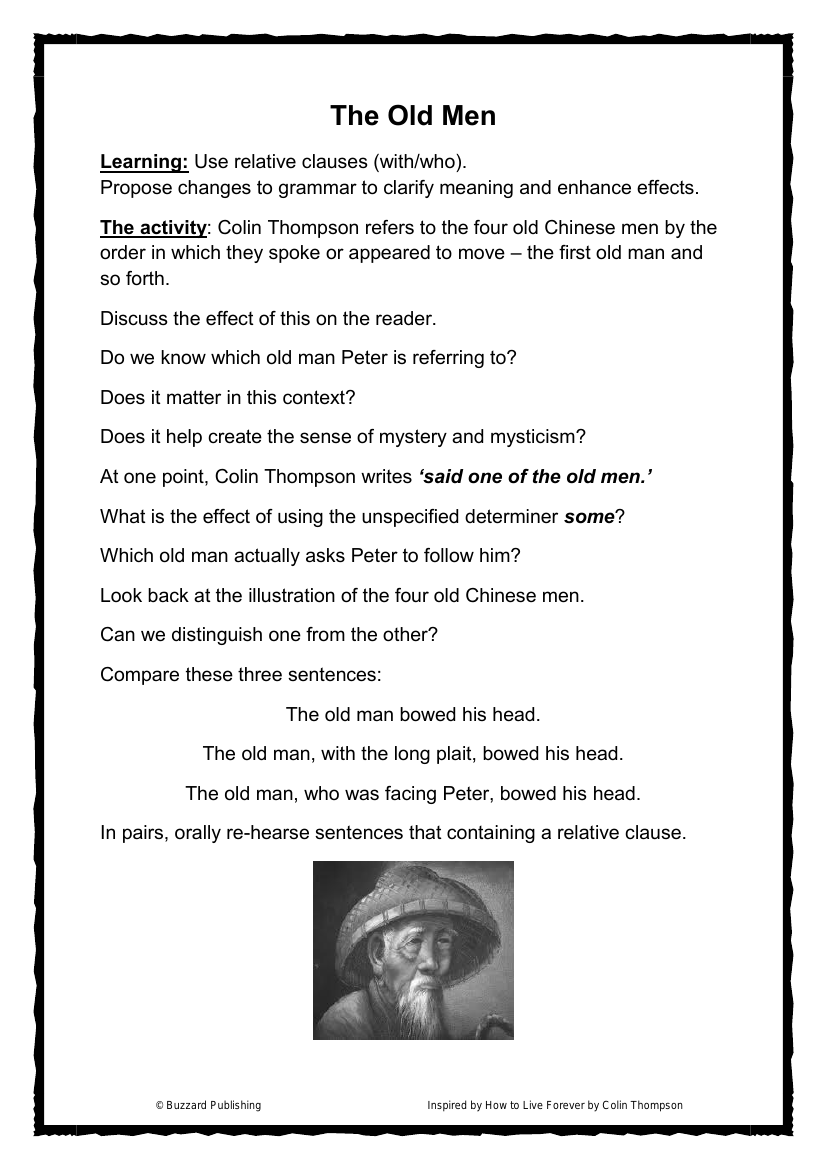Inspired by: How to Live Forever - Week 5

English Resource Description
In the narrative of 'The Old Men', the author Colin Thompson chooses to refer to the characters by their sequence of actions or speech rather than by name, labelling them as 'the first old man' and so on. This stylistic choice has a distinct impact on the reader, creating a sense of ambiguity and timelessness. The lack of specific identifiers may lead to questions about which old man is engaging with Peter at any given time, but within the context of the story, this ambiguity does not detract from the narrative. Instead, it adds to the mystical atmosphere of the tale, allowing the characters to represent more universal figures rather than distinct individuals. Thompson's use of 'one of the old men' further enhances this effect, as the unspecified determiner 'one' contributes to the overall sense of mystery. The illustrations accompanying the text may offer visual distinctions between the characters, yet the narrative itself maintains their enigmatic presence.
Within 'The Chinese Garden', the old man's poetic description of the surroundings introduces Peter, and thus the reader, to the beauty and tranquillity of the garden. The old man's recitation of 'Praising the Plum Flower' by Wang An Shi, a poem in the gushi format, immerses the audience in ancient Chinese poetic tradition. The poem's meaning and rhythm are to be explored, alongside its metaphorical imagery, encouraging readers to delve into the subtleties of this cultural art form. The activity extends to examining other gushi examples and ultimately challenges readers to create their own, fostering an appreciation for the depth and elegance of this poetic style. This creative exercise not only enhances the understanding of the story's setting but also allows readers to connect more deeply with the rich cultural context presented in Colin Thompson's work.
